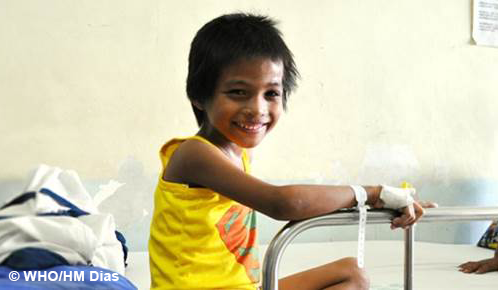 SIAPS contributed to the global End TB strategy by providing technical leadership and support to ensure the availability of quality pharmaceutical products and implementation of effective pharmaceutical services.
SIAPS contributed to the global End TB strategy by providing technical leadership and support to ensure the availability of quality pharmaceutical products and implementation of effective pharmaceutical services.
The SIAPS Approach
SIAPS used a multipronged approach to achieve its goal by providing:
- Global technical leadership
- Stakeholder consensus building
- Direct technical assistance to strengthen pharmaceutical systems and services
- Capacity and skill building
SIAPS implemented many activities to strengthen the TB pharmaceutical system in high TB burden countries. Highlights of some key projects included:
- Implementation of QuanTB as an early warning system (EWS) through direct technical support to 15 countries to prevent stock-outs and minimize wastage due to expiries of TB commodities. QuanTB was also adopted by STOP TB’s Global Drug Facility and is recommended for use by countries that need an EWS to strengthen pharmaceutical systems.
- Technical support to countries to promote the adoption and introduction of new TB medicines and regimens. SIAPS worked with countries to engage and coordinate with stakeholders, build upon existing systems or establish new ones where appropriate, and strengthen human resources.
- Collaboration with national TB programs and national regulatory bodies to establish or strengthen active surveillance systems to determine the real-life frequency, risk factors, and impact of clinically significant adverse medicine events on treatment outcomes.
Achievements
- Improved pharmaceutical services and access to TB products: During an in-depth review of five countries (Ethiopia, Nigeria, Tanzania, Kenya, and Zimbabwe) that received technical assistance from SIAPS, stocks-outs of TB medicines decreased from 38% to 0% for first-line medicines and from 17% to 0% for second-line medicines between February 2014 and December 2015. Actions taken by these countries, such as cross-border transfer of stock at risk of expiring and order delivery postponement as a result of EWS findings, saved more than USD 10 million between December 2014 and June 2016.
- Rapid introduction and adoption of new TB medicines and regimens: SIAPS provided technical assistance to five countries for programmatic implementation of new TB medicines and regimens. For example, with SIAPS support, more than 200 patients in the Republic of Georgia were enrolled in treatment with bedaquiline on a programmatic basis; nearly 70 patients in Swaziland and more than 40 in the Philippines were also enrolled as of November 2016. SIAPS trained nearly 600 health care workers on clinical and adverse events management for new TB drugs and on the nine-month regimen in all five countries. SIAPS developed an information website (www.newTBdruginfo.org) with resources for program managers, MOH staff, and health care workers and an eCourse on clinical and adverse event management for new TB medicines and regimens.
- Pharmacovigilance and improved patient safety: SIAPS developed the Pharmacovigilance Monitoring System (PViMS), a web-based application used by clinicians, regulatory bodies, and implementing partners to monitor the safety and effectiveness of medicines. PViMS was implemented in Georgia and formally handed over to the national TB center to aggregate and analyze serious adverse event data from sites across the country.
Resources
- Drug Use Reviews – A Practical Strategy to Ensue the Rational Use of Anti-Tuberculosis Medicines
- Preventing and Minimizing Risks Associated with Antituberculosis Medicines to Improve Patient Safety
- Learn more about SIAPS tools for TB: PViMS, QuanTB, and e-TB Manager
- Global Survey of Over 2000 Users Reveals High Satisfaction with e-TB Manager
- New TB Medicines Website
- QuanTB and New TB Drug courses

